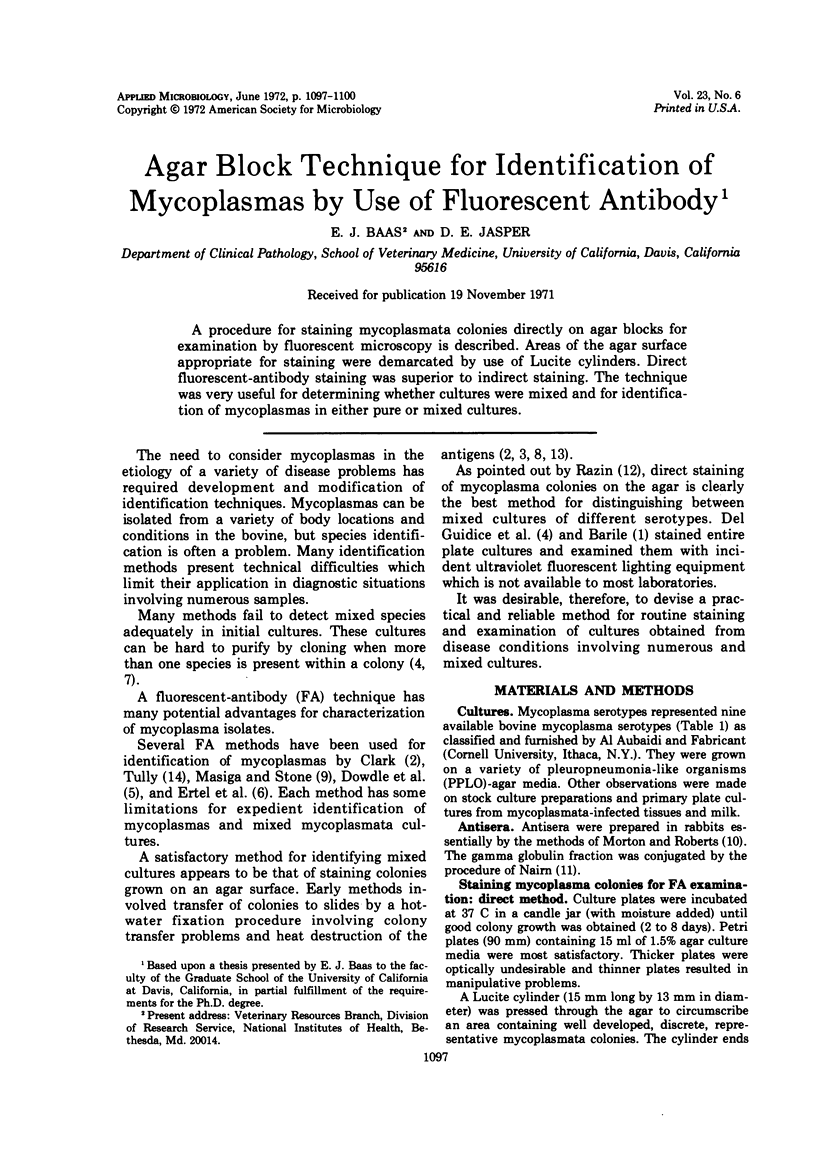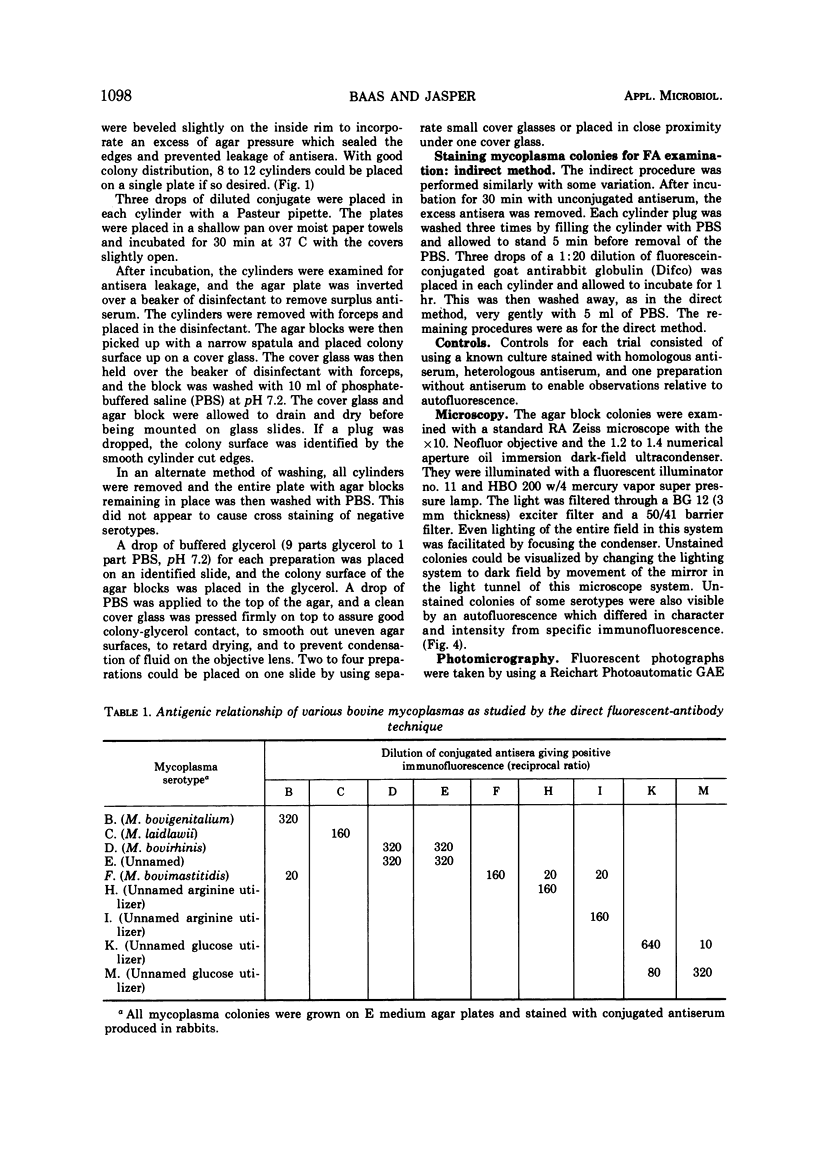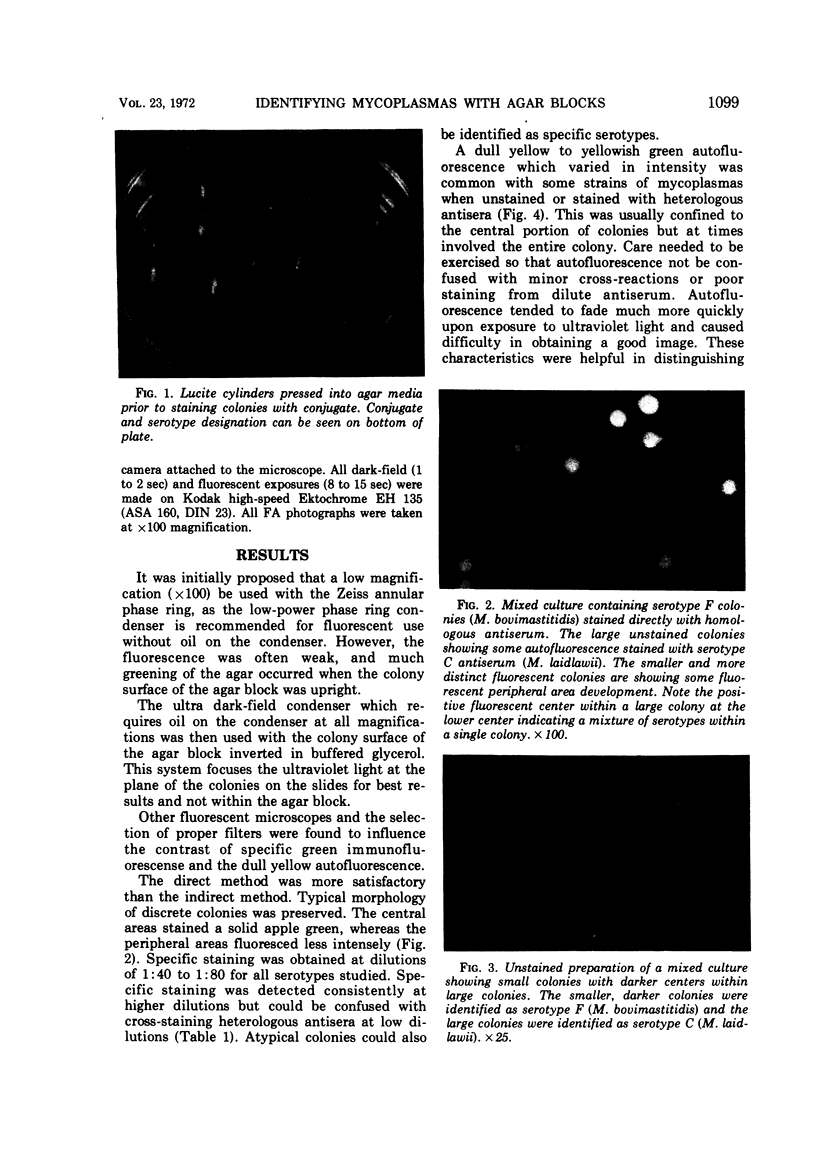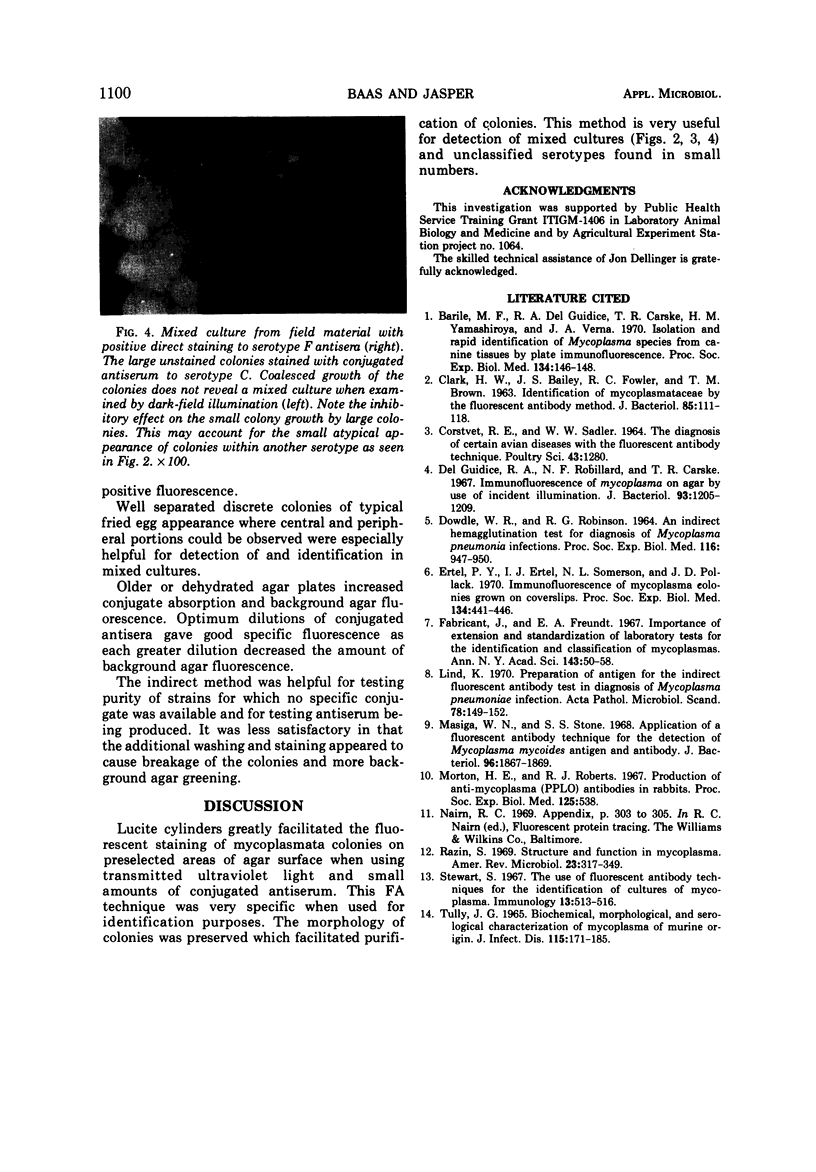Abstract
A procedure for staining mycoplasmata colonies directly on agar blocks for examination by fluorescent microscopy is described. Areas of the agar surface appropriate for staining were demarcated by use of Lucite cylinders. Direct fluorescent-antibody staining was superior to indirect staining. The technique was very useful for determining whether cultures were mixed and for identification of mycoplasmas in either pure or mixed cultures.
Full text
PDF



Images in this article
Selected References
These references are in PubMed. This may not be the complete list of references from this article.
- Barile M. F., DelGiudice R. A., Carski T. R., Yamashiroya H. M., Verna J. A. Isolation and rapid identification of Mycoplasma species from canine tissues by plate immunofluorescence. Proc Soc Exp Biol Med. 1970 May;134(1):146–148. doi: 10.3181/00379727-134-34747. [DOI] [PubMed] [Google Scholar]
- Clark H. W., Bailey J. S., Fowler R. C., Brown T. M. IDENTIFICATION OF MYCOPLASMATACEAE BY THE FLUORESCENT ANTIBODY METHOD. J Bacteriol. 1963 Jan;85(1):111–118. doi: 10.1128/jb.85.1.111-118.1963. [DOI] [PMC free article] [PubMed] [Google Scholar]
- DOWDLE W. R., ROBINSON R. Q. AN INDIRECT HEMAGGLUTINATION TEST FOR DIAGNOSIS OF MYCOPLASMA PNEUMONIAE INFECTIONS. Proc Soc Exp Biol Med. 1964 Aug-Sep;116:947–950. doi: 10.3181/00379727-116-29416. [DOI] [PubMed] [Google Scholar]
- Del Giudice R. A., Robillard N. F., Carski T. R. Immunofluorescence identification of Mycoplasma on agar by use of incident illumination. J Bacteriol. 1967 Apr;93(4):1205–1209. doi: 10.1128/jb.93.4.1205-1209.1967. [DOI] [PMC free article] [PubMed] [Google Scholar]
- Ertel P. Y., Ertel I. J., Somerson N. L., Pollack J. D. Immunofluorescence of mycoplasma colonies grown on coverslips. Proc Soc Exp Biol Med. 1970 Jun;134(2):441–446. doi: 10.3181/00379727-134-34809. [DOI] [PubMed] [Google Scholar]
- Fabricant J., Freundt E. A. Importance of extension and standardization of laboratory tests for the identification and classification of mycoplasma. Ann N Y Acad Sci. 1967 Jul 28;143(1):50–58. doi: 10.1111/j.1749-6632.1967.tb27643.x. [DOI] [PubMed] [Google Scholar]
- Lind K. Preparation of antigen for the indirect fluorescent antibody test in diagnosis of mycoplasma pneumoniae infection (A technical report). Acta Pathol Microbiol Scand B Microbiol Immunol. 1970;78(2):149–152. doi: 10.1111/j.1699-0463.1970.tb04281.x. [DOI] [PubMed] [Google Scholar]
- Masiga W. N., Stone S. S. Application of a fluorescent-antibody technique for the detection of Mycoplasma mycoides antigen and antibody. J Bacteriol. 1968 Nov;96(5):1867–1869. doi: 10.1128/jb.96.5.1867-1869.1968. [DOI] [PMC free article] [PubMed] [Google Scholar]
- Morton H. E., Roberts R. J. Production of anti-Mycoplasma (PPLO) antibodies in rabbits. Proc Soc Exp Biol Med. 1967 Jun;125(2):538–543. doi: 10.3181/00379727-125-32140. [DOI] [PubMed] [Google Scholar]
- Stewart S. M. The use of fluorescent-antibody technique for the identification of cultures of Mycoplasma. Immunology. 1967 Nov;13(5):513–516. [PMC free article] [PubMed] [Google Scholar]
- TULLY J. G. BIOCHEMICAL, MORPHOLOGICAL, AND SEROLOGICAL CHARACTERIZATION OF MYCOPLASMA OF MURINE ORIGIN. J Infect Dis. 1965 Apr;115:171–185. doi: 10.1093/infdis/115.2.171. [DOI] [PubMed] [Google Scholar]






